Flanagani89
Member
Hey all. Hope everything is well.
So this year I have a guerrilla grow going with 16 plants (northeast). Strains are blue widow, dutch delight, ams, blueberry headband, and a few others.
Dug holes (20 - 25 gals each) and filled them with an organic mix in April (pro mix, happy frog, perlite, kelp, bone, and blood meal, tomato tone, gupsum and some greensand) Plants were started inside April 20th, put into holes around may 5th. Plants were sprayed with neem oil first every week or 2, then azatrol twice, then sm-90 a few times.
So, about 2 months ago I started to see these yellow spots appearing on some of the lower-mid leaves on only a few of my plants. Leaves would then turn yellow and die. This shit is pretty much throughout my entire garden now, some plant's have lost a ton of their lower leaves. I thought it was maybe a N def, so I top dressed with blood meal about a month ago. Didn't help. Last week I made a 1:1 mixture of high n guano and high p and top dressed each ond with 4 tablespoons. Checked on them today and it didn't help at all? Plants were drenched with a AACT 2 times a week for the past month as well (guanos, bio weed, compost, molasass) didnt help either..
They are definitely getting worse. A few of my plants are starting to lose that healthly dark green color and change to a pale green.
It's getting to the point now when I'm getting extremely frustrated when I go to check on them... I've tried everything I can think of however nothing seems to help...
Could it be a pH issue? I thought you don't have to worry about pH with organics?
Please is anyone has any input at all I'll be grateful. Hopefully pics do it justice.
Thanks.
So this year I have a guerrilla grow going with 16 plants (northeast). Strains are blue widow, dutch delight, ams, blueberry headband, and a few others.
Dug holes (20 - 25 gals each) and filled them with an organic mix in April (pro mix, happy frog, perlite, kelp, bone, and blood meal, tomato tone, gupsum and some greensand) Plants were started inside April 20th, put into holes around may 5th. Plants were sprayed with neem oil first every week or 2, then azatrol twice, then sm-90 a few times.
So, about 2 months ago I started to see these yellow spots appearing on some of the lower-mid leaves on only a few of my plants. Leaves would then turn yellow and die. This shit is pretty much throughout my entire garden now, some plant's have lost a ton of their lower leaves. I thought it was maybe a N def, so I top dressed with blood meal about a month ago. Didn't help. Last week I made a 1:1 mixture of high n guano and high p and top dressed each ond with 4 tablespoons. Checked on them today and it didn't help at all? Plants were drenched with a AACT 2 times a week for the past month as well (guanos, bio weed, compost, molasass) didnt help either..
They are definitely getting worse. A few of my plants are starting to lose that healthly dark green color and change to a pale green.
It's getting to the point now when I'm getting extremely frustrated when I go to check on them... I've tried everything I can think of however nothing seems to help...
Could it be a pH issue? I thought you don't have to worry about pH with organics?
Please is anyone has any input at all I'll be grateful. Hopefully pics do it justice.
Thanks.
Attachments
-
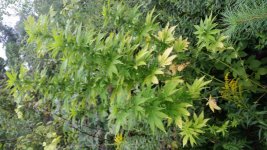 20160814_182442.jpg77.2 KB · Views: 5
20160814_182442.jpg77.2 KB · Views: 5 -
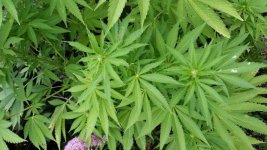 20160814_182219.jpg68.2 KB · Views: 4
20160814_182219.jpg68.2 KB · Views: 4 -
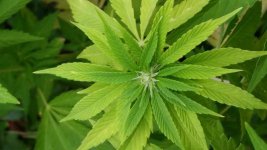 20160814_182132.jpg42.5 KB · Views: 5
20160814_182132.jpg42.5 KB · Views: 5 -
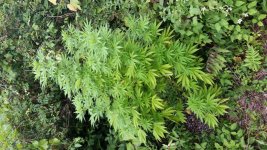 20160814_182057.jpg108.5 KB · Views: 3
20160814_182057.jpg108.5 KB · Views: 3 -
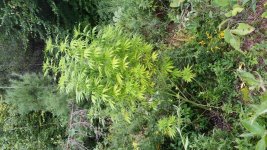 20160814_182620.jpg113 KB · Views: 5
20160814_182620.jpg113 KB · Views: 5 -
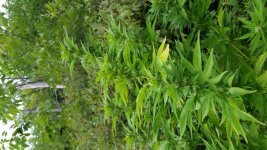 20160814_181042.jpg77 KB · Views: 6
20160814_181042.jpg77 KB · Views: 6 -
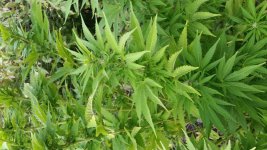 20160814_181037.jpg75.7 KB · Views: 4
20160814_181037.jpg75.7 KB · Views: 4 -
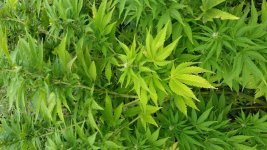 20160814_181003.jpg79.8 KB · Views: 5
20160814_181003.jpg79.8 KB · Views: 5 -
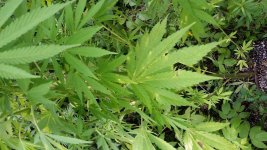 20160814_174851.jpg75.4 KB · Views: 4
20160814_174851.jpg75.4 KB · Views: 4 -
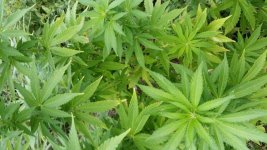 20160814_174547.jpg66 KB · Views: 4
20160814_174547.jpg66 KB · Views: 4


